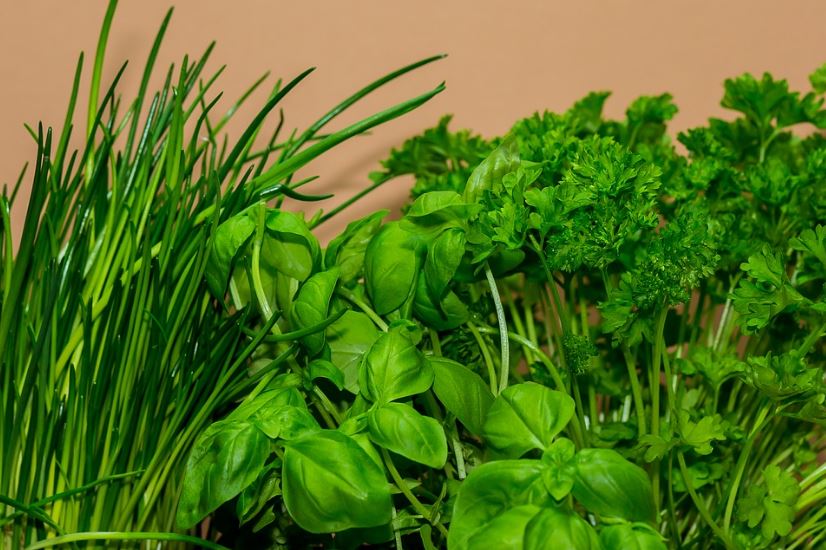Growing herbs can be easy and low-maintenance to grow. You don’t need to have a garden or a backyard – even if you grow it in containers, you can have a flourishing herb garden. As long as it receives a fair amount of sun, it can thrive. Plus, keeping bees around your plants can also help having an herb garden that can brighten both your space and your culinary masterpieces.
If your place receives a good amount of morning sun – which means it gets partial shade and less intense sunlight – then you might be wondering what grows best in a space like this. Fortunately, several herbs grow well in shady conditions, wherein plants receive at least a few hours of shade each day. If you’re curious about what to grow in your morning sun herb farm, here are some suggestions:
Basil (Ocimum basilicum)
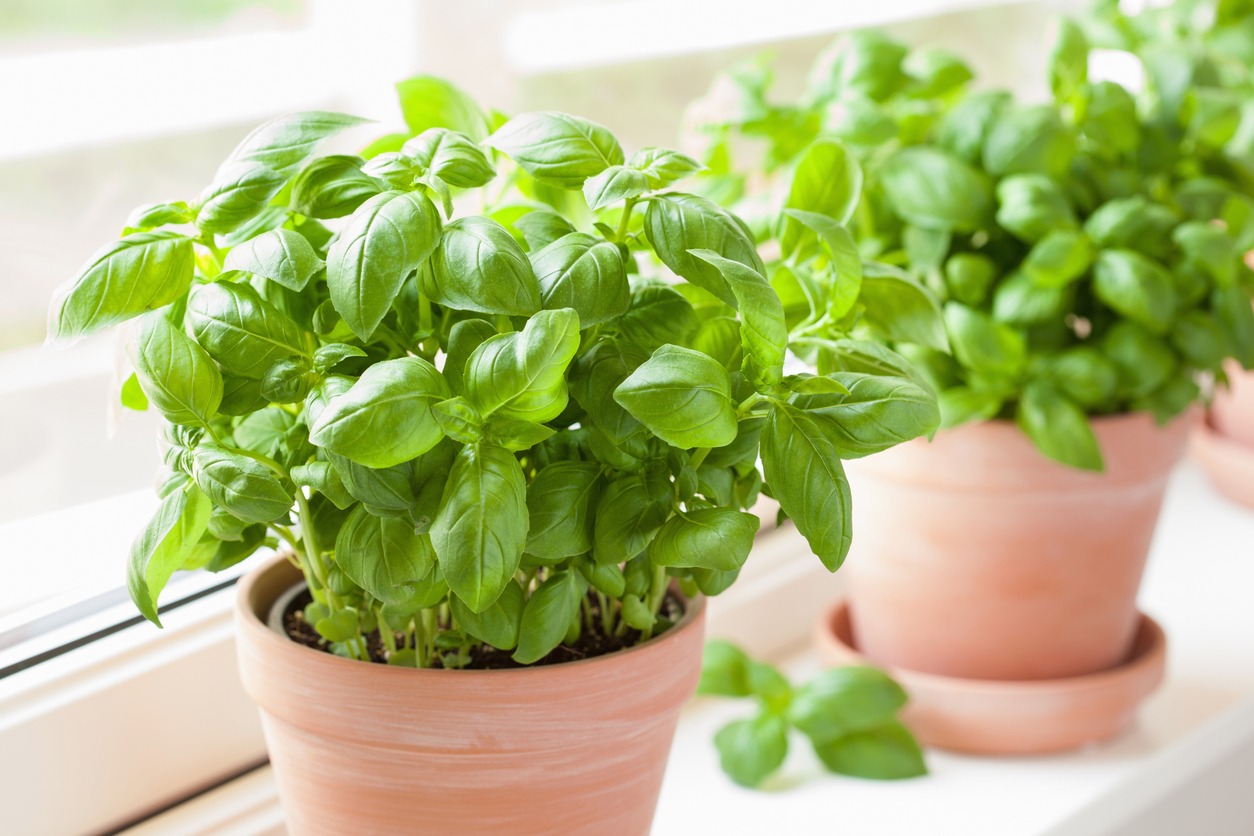
Basil is one of the most common herbs used in both culinary and medicinal purposes. It can be grown from seeds and can be planted indoors or in the garden. Basil is best used in Italian dishes, Asian dishes, and pesto.
Though basil enjoys full sun, they don’t tolerate dry conditions, so use mulch cover to help retain moisture when it’s exposed to the hot early afternoon sun. It thrives well in warm temperatures and the morning sun, especially if you live in a place with a hot climate. Basil grows fast, and you need to harvest the tops regularly to keep it from bolting, which slows down plant growth.
Dill (Anethum graveolens)
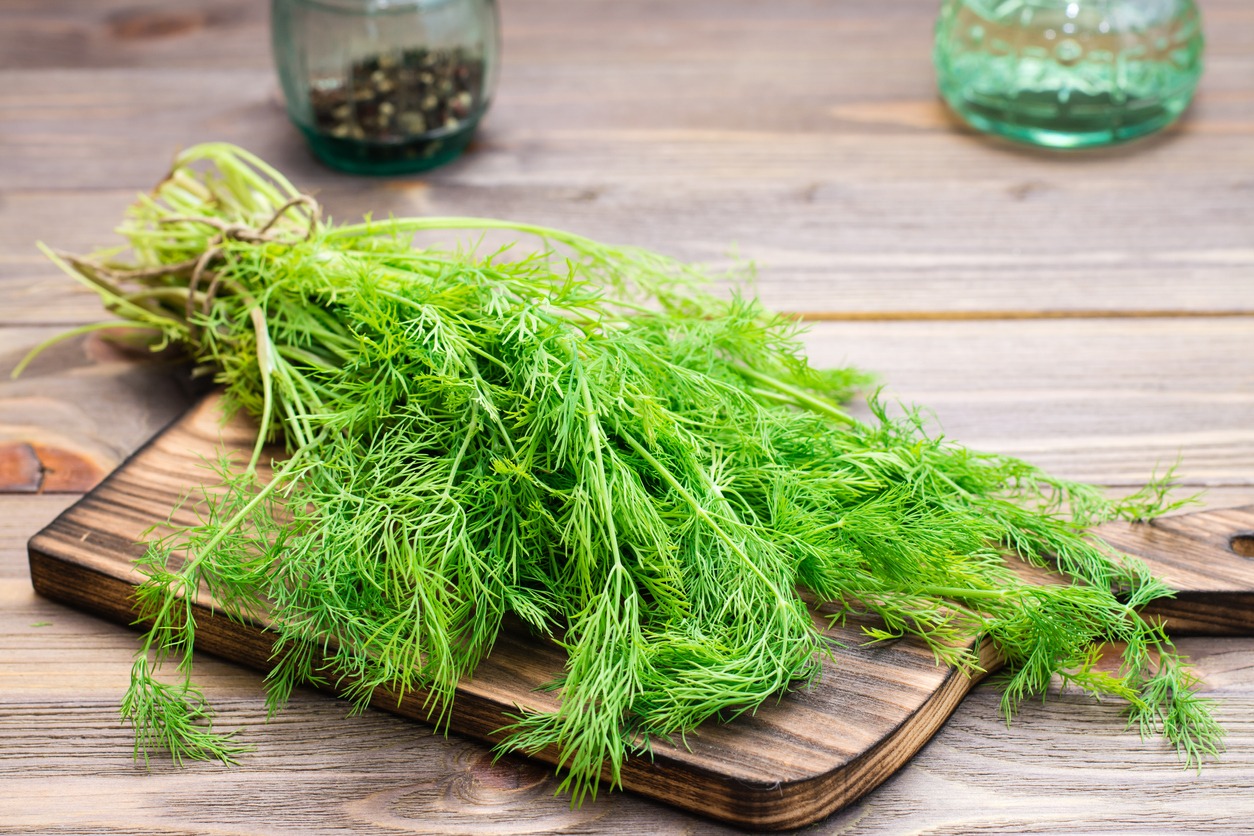
Dill is an annual herb known for its aromatic properties and is used for many dishes, especially fish and vegetables. Its ferny foliage makes a beautiful textural accent to your home and garden. Plus, it attracts helpful insects like bees and butterflies, which will benefit your garden.
This herb is easy to grow in a sunny garden where it can enjoy full sun, but if you live in an area with a hot climate, it’s best to keep dill in morning or afternoon shade because it can bolt if the sun is too hot. Grow it in loamy soil and provide average moisture.
Mint (Mentha spp.)
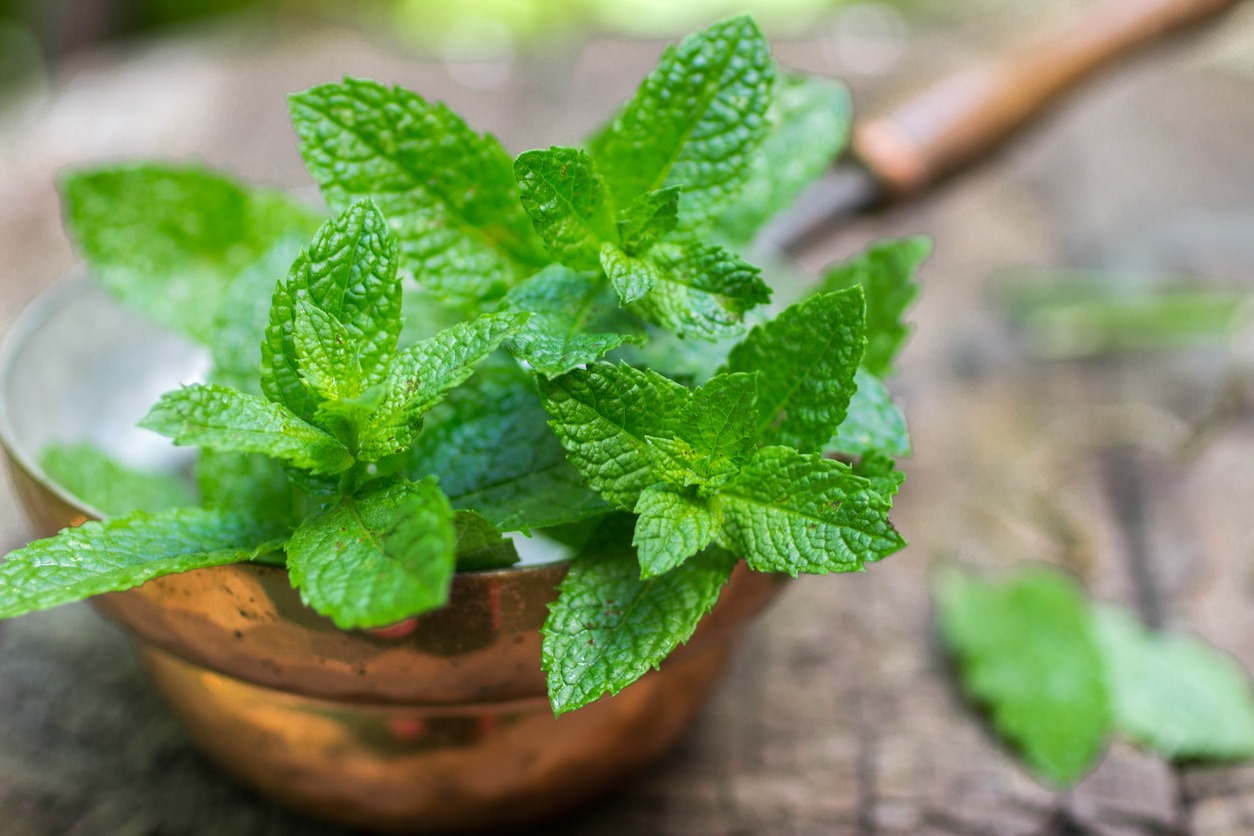
Mint is one of the best choices of herbs to grow in a shady spot. It grows so fast and so quickly that it can take over other plants if it’s not carefully tended to. Plant mint in containers or pot it before adding to garden beds for best results. It grows well in rich, well-drained soil. If planted in the shade, mint can sprawl towards sunlight, so make sure to trim it regularly to keep it from getting leggy. It’s also a great filler for those shade garden designs that need extra specimens.
This foliage is known for its strong and minty fragrance, so it’s commonly used for teas and added to salads. It also pairs well with sweet and savory dishes, including soups, roasts, and pasta.
Parsley (Petroselinum crispum)
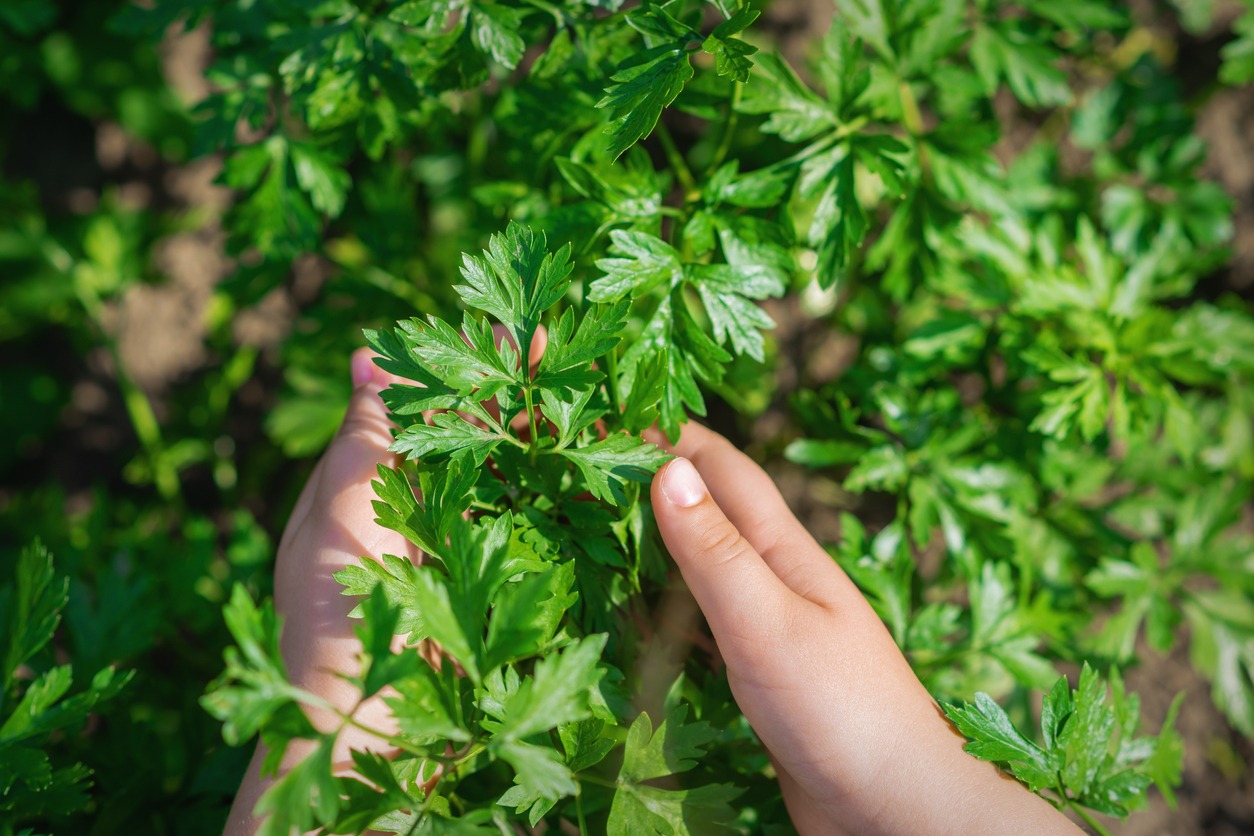
Parsley is a biennial herb usually grown as an annual. There are many different forms of parsley available, each with a slightly different taste. It pairs well with meats, soups, roasts, and salads. Whether fresh or dried, it has almost unlimited use in cooking. While it can tolerate almost any sunlight condition, it needs moist, well-drained soil.
As with any herb that loves the shade, keep parsley trimmed to keep it from sprawling and getting leggy. The plant has long taproots, making it ideal for large containers if you decide to grow them in pots.
Lemon balm (Melissa officinalis)
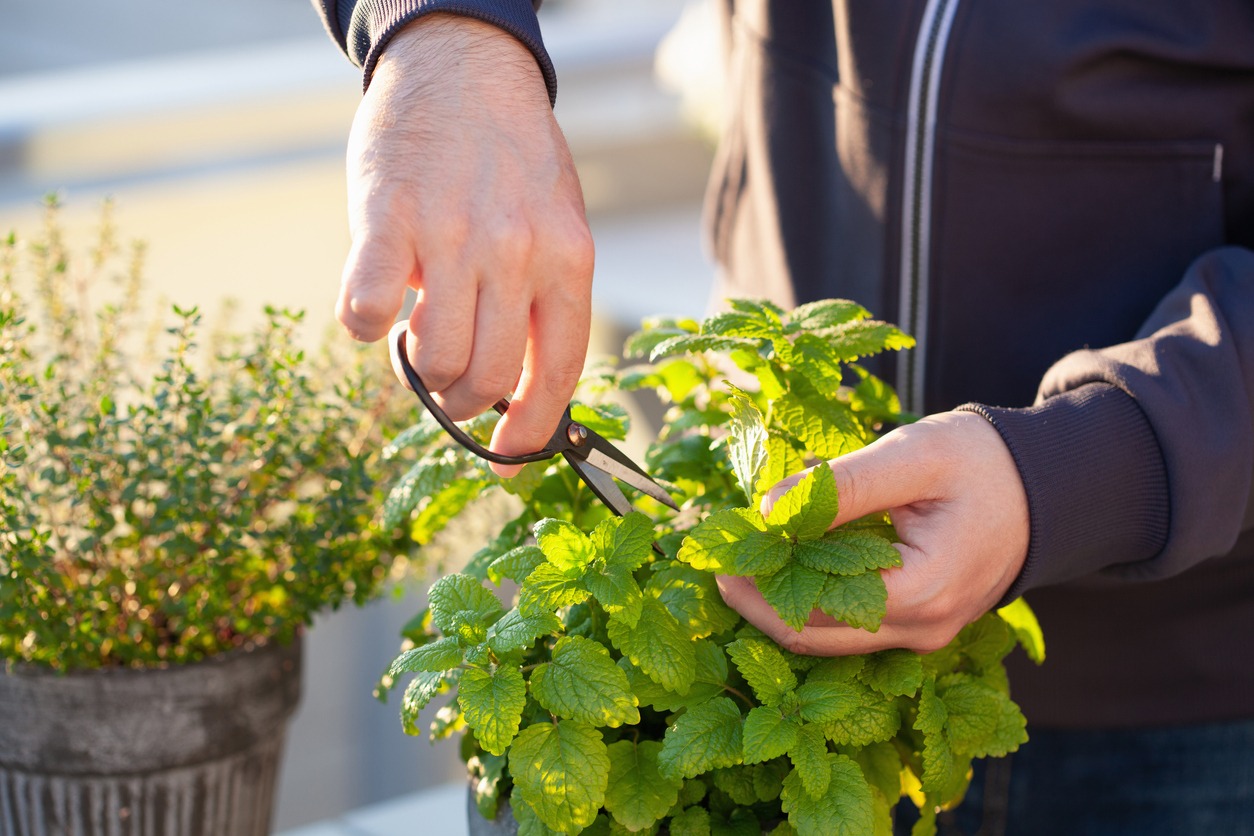
Lemon balm is a perennial that produces fragrant leaves and a minty, citrus scent that is often used to flavor salads and marinades for fish and chicken. You can also use its fresh leaves to add a fresh flavor to teas and summer drinks.
It’s an easy-to-grow herb that tolerates a variety of soil conditions, though it prefers rich and moderately moist soil. You can grow it in full shade or dappled sunlight, but keep it trimmed to keep the shape compact.
Chives (Allium schoenoprasum)
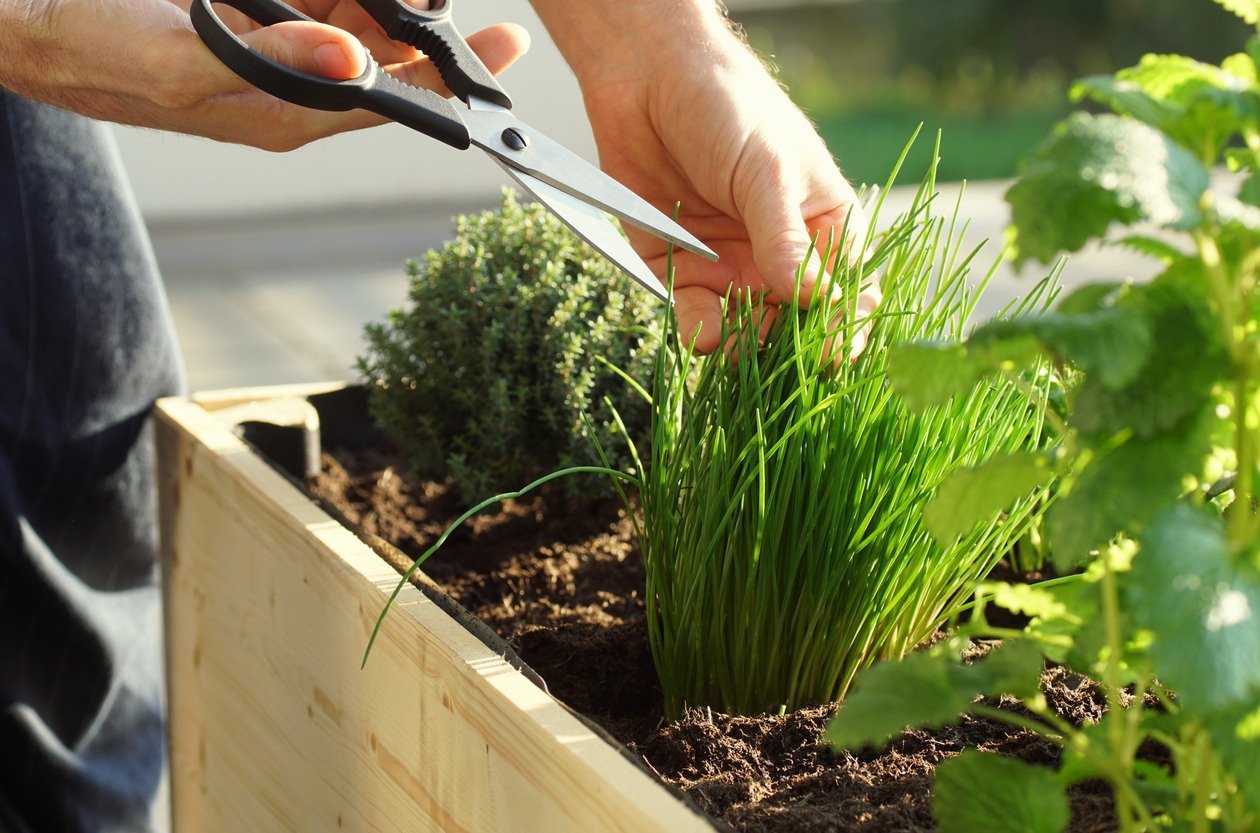
Chives are herbs that grow grass-like leaves that can be clipped and added to stews, salads, and other dishes. Though they prefer full sun, they can tolerate growing in partial shade, especially in hot climates. Like most herbs, they can self-seed in the garden if flowers can set seeds.
Chives are a close relative of the onion, garlic, and shallots, though with a milder taste. The orb-shaped lavender flowers that bloom in the summer are also edible and are attractive to pollinating insects like butterflies and honeybees. Try planting chives to fill a shade garden or to add color.
Thyme (Thymus vulgaris)
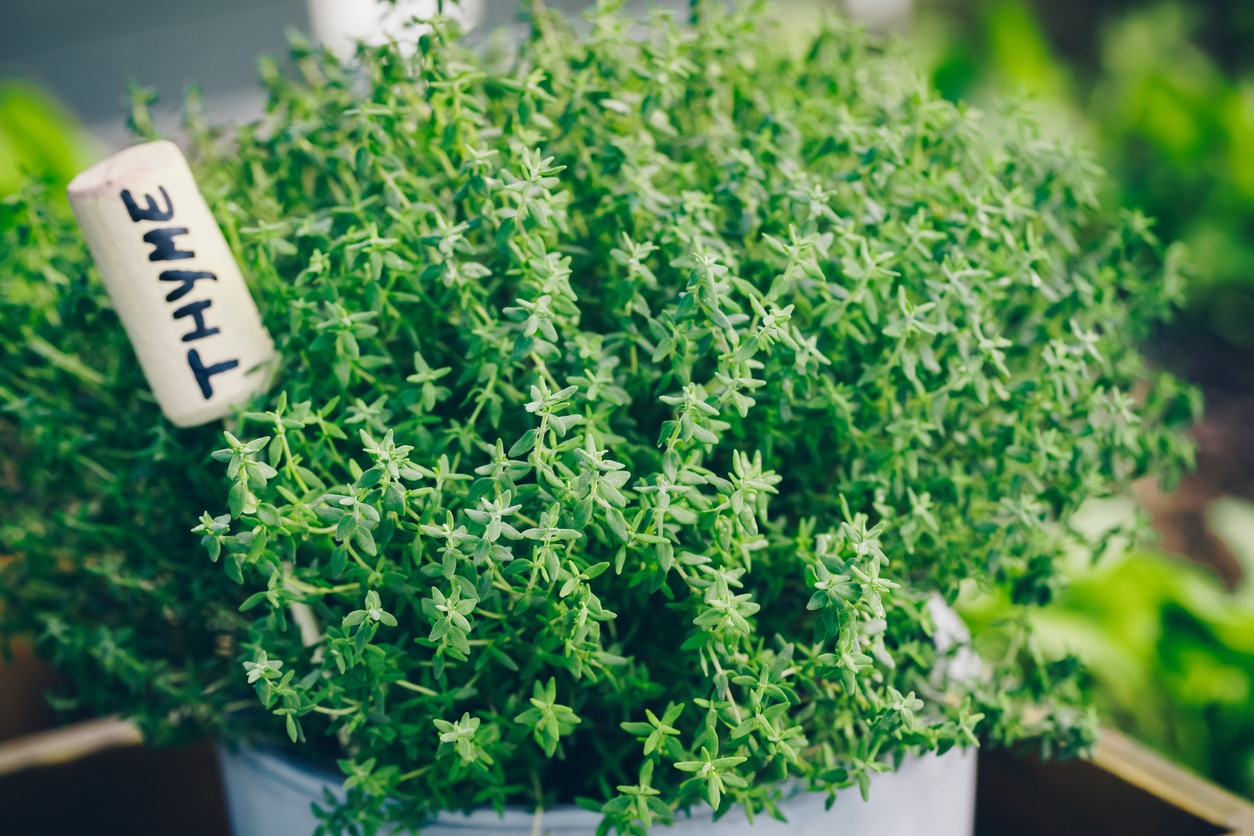
Thyme has delicate-looking, tiny green leaves, and wiry stems. This hearty perennial herb offers a savory flavor that complements most meats, soups, and stews – whether it’s fresh or dried.
This woody shrub grows best in dappled sunlight than deep shade. Growing it from seed is a great way to secure lots of produce, but you may have to wait until the second year before harvesting. It prefers sandy, dry soil, and you only need a moderate amount of organic fertilizer during planting.
Cilantro (Coriandrum sativum)
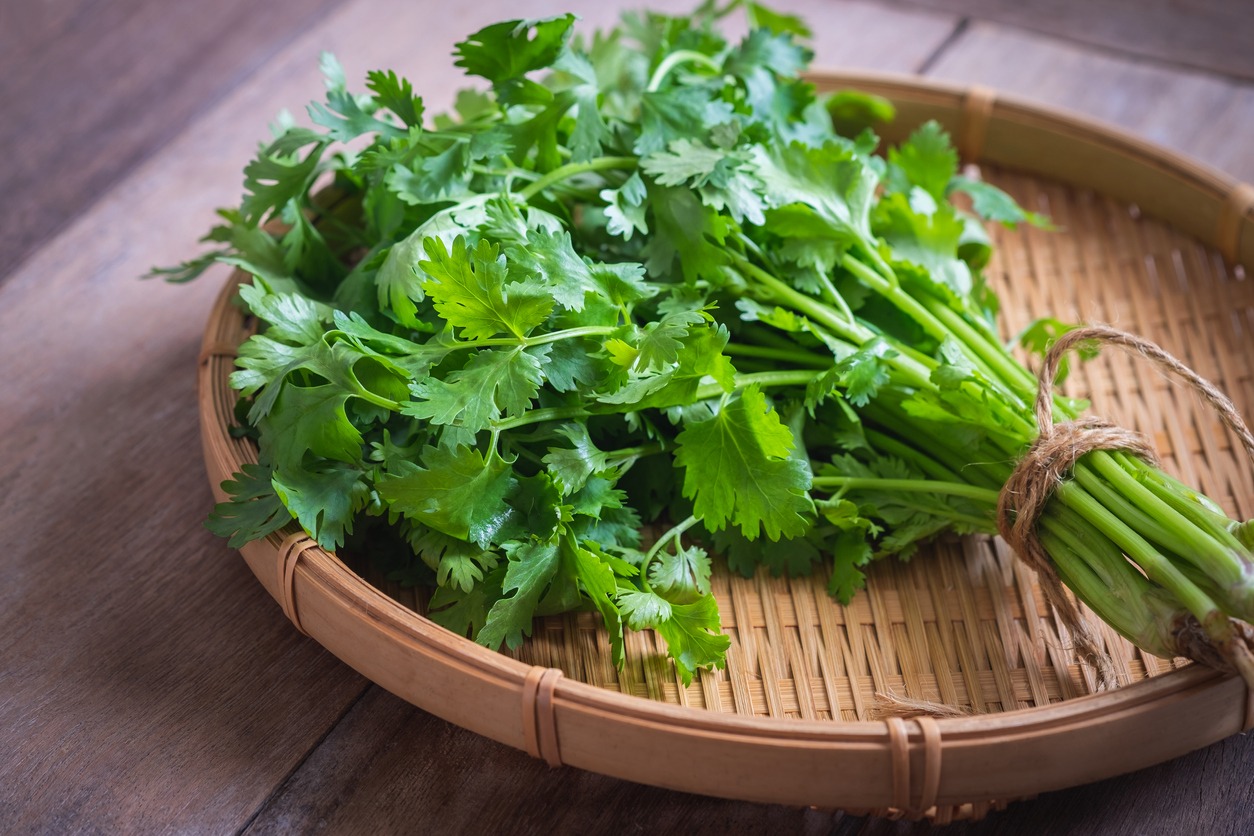
Also known as coriander, cilantro is widely used in Mexican, Asian, and Middle Eastern cuisine. When used as seeds, it can bring some mild, earthy, lemony flavor when added to soups, stews, and curries. It has small, bright green leaves that grow in full sun to partial shade. This is a cool-season herb that likes some shade when temperatures get hot.
If you’re growing it to harvest the leaves, keep cilantro from bolting or flowering as the herb’s flavor will change, giving a bit soapy taste to it. Once cilantro does flower, seeds will appear, and you can use it to spice up savory dishes. You need to plant it in well-drained, loamy, or sandy soil.
Tarragon (Artemisia dracunculus)
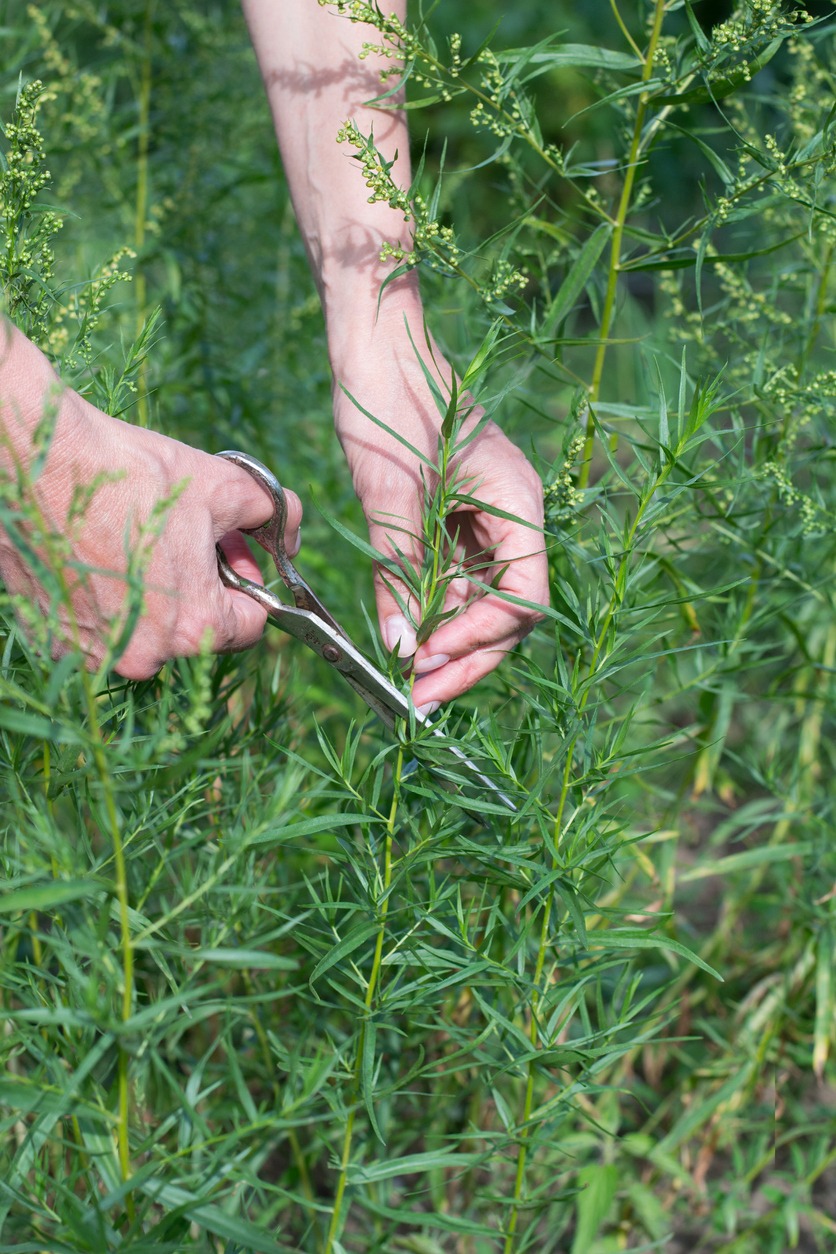
Tarragon is a perennial herb with aromatic, anise-licorice-flavored leaves. It’s a versatile herb used to flavor meats, salads, vinegars, roasted veggies, and seasoning mixes.
It’s easiest to grow tarragon from seedlings or cuttings. It appreciates the morning sun and the afternoon shade. Plant it in a well-drained soil enriched with organic matter.
Oregano (Origanum vulgare)
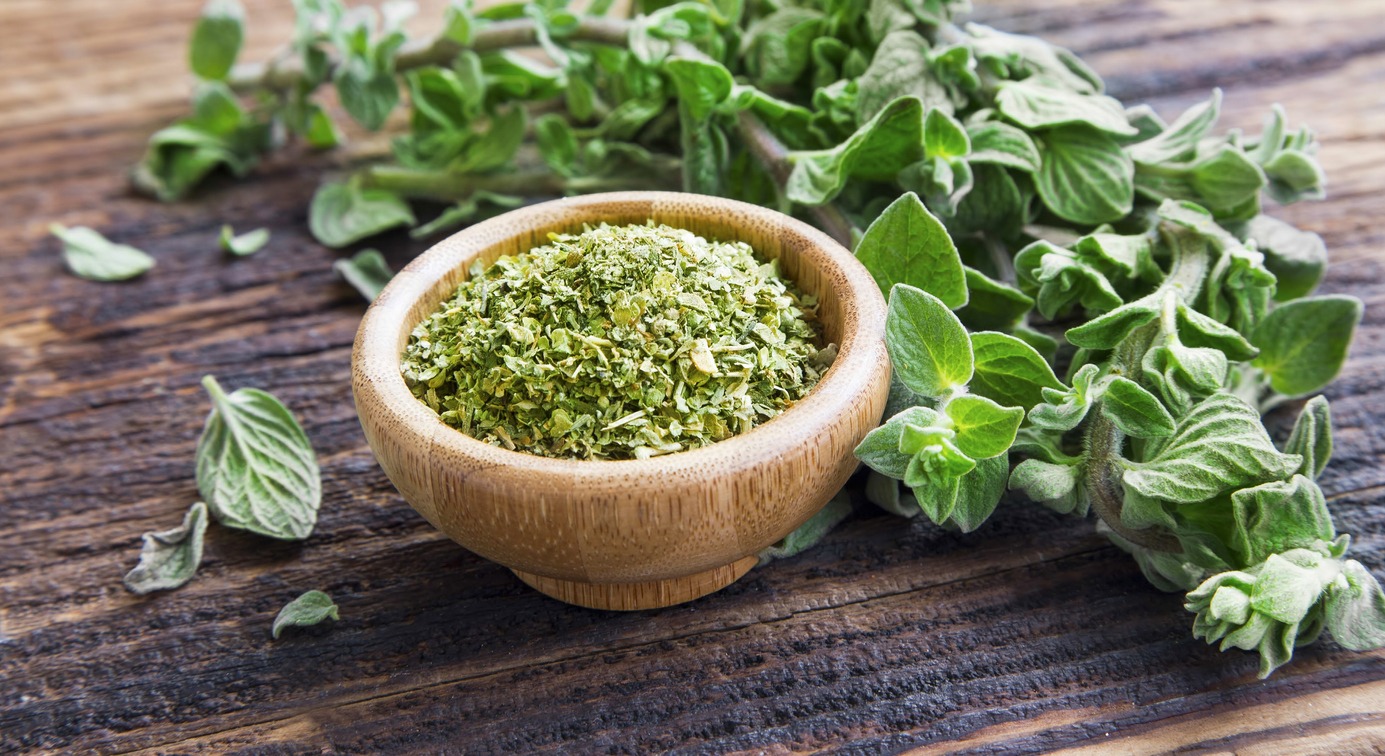
Oregano is a hardy perennial that’s easy to grow, especially in loamy soil that drains well. You can grow it from seed, transplant seedlings, or re-plant divisions from established oregano plants – no matter what method you choose, it will work.
This herb is widely used in Italian and Greek cuisine, and it pairs well with other dishes like stews, grilled meats, salads, pizza, and soups. It’s best to cut back in late spring to encourage growth and again in the middle of the summer to keep it from becoming woody.
Chervil (Anthriscus cerefolium)
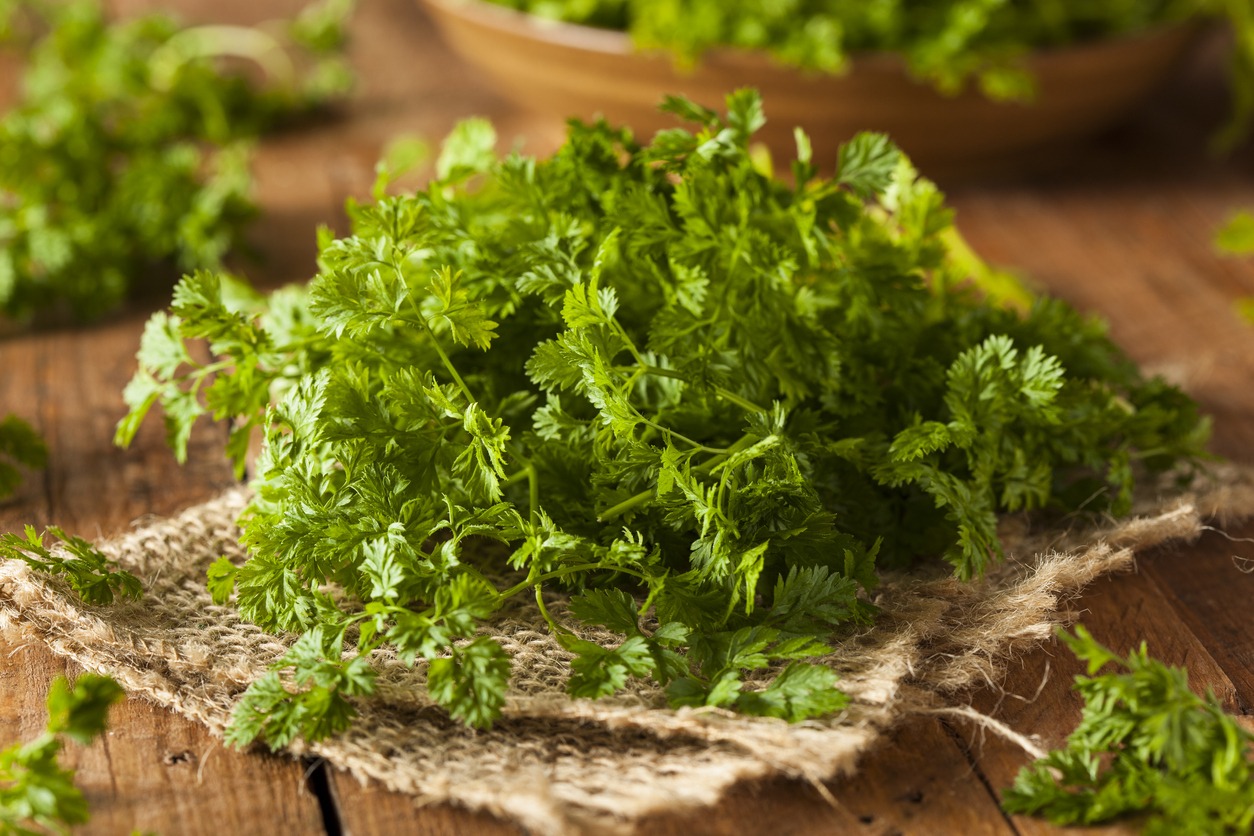
Chervil is an annual herb that’s part of the carrot family. It’s highly popular in French cuisine, and it compliments poultry, fish soups, and sauces. It can also be added to salads, sautéed veggies, and scrambled eggs.
Chervil prefers cooler soil enriched with compost, and it produces more foliage during cold seasons. Directly sow it in the garden during early spring and then sow seeds in succession in four weeks for a continuous harvest.
Lovage (Levisticum officinale)
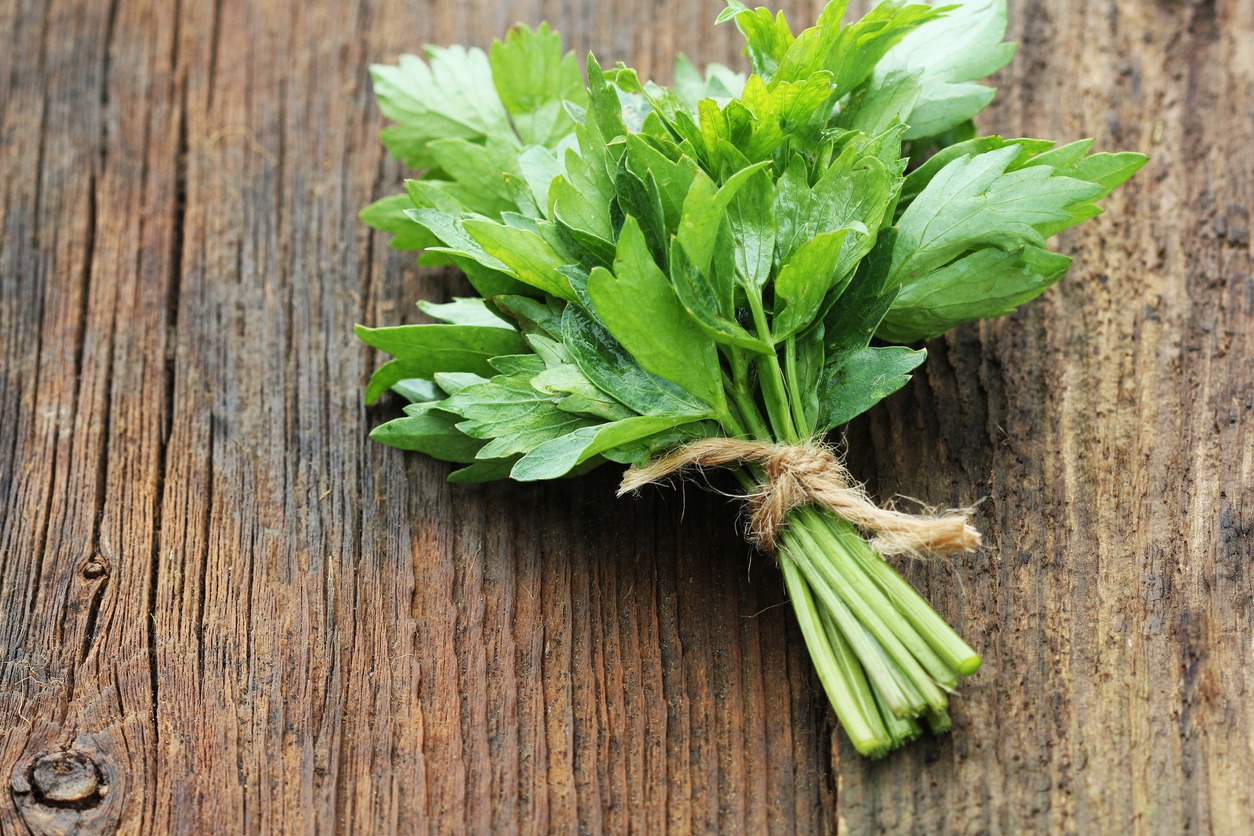
Lovage is a tall, perennial herb with green leaves and bright yellow flowers that draw pollinating insects. The stems, leaves, roots, and seeds are edible, and it tastes like celery. You can use the roots, leaves, stalks, and even the seeds to flavor soups, salads, sauces, and stews.
Plant this herb on loose, rich, loamy soil that retains moisture. Place it in an area that receives the morning sun.

